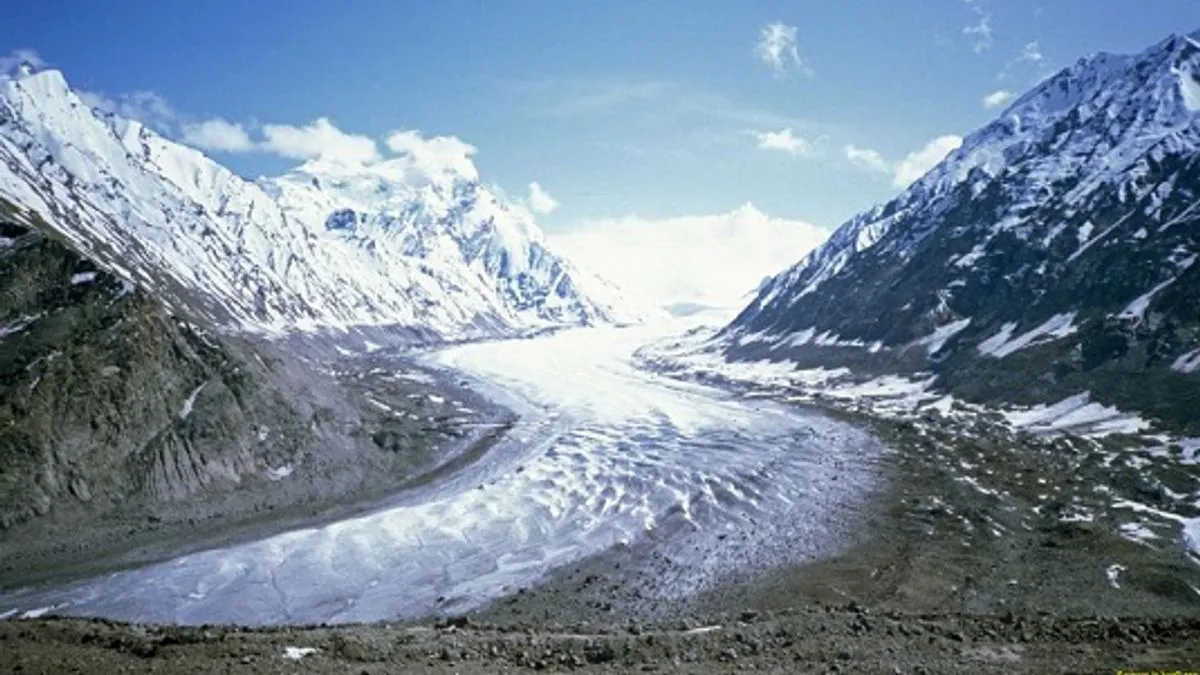Pakistan, a land of stunning natural beauty and diverse landscapes, boasts towering mountains, serene valleys, and an incredible array of glaciers. Among these wonders, the longest glacier of Pakistan stands out as a remarkable feature, showcasing the country’s unique climatic and geographical diversity. This article delves into the captivating world of glaciers in Pakistan.
What is a Glacier?
A glacier is a massive, slow-moving body of ice that forms over centuries from compacted snow layers. These natural ice reservoirs are crucial to the Earth's ecosystem as they:
-
Serve as freshwater storage.
-
Regulate global temperatures by reflecting sunlight.
-
Act as indicators of climate change due to their sensitivity to temperature variations.
Glaciers are not just majestic formations but also play a critical role in sustaining life, especially in regions like Pakistan, where they are a primary source of freshwater.

Which is the Largest Glacier of Pakistan?
The largest glacier in Pakistan is the Siachen Glacier, located in the Karakoram Range. Spanning approximately 76 kilometers, it is not only the longest glacier in Pakistan but also one of the largest glaciers outside the polar regions.
Key Features of the Siachen Glacier:
-
Length: Approximately 76 kilometers
-
Location: Karakoram Range
-
Significance: A vital source of freshwater for Pakistan’s rivers, it supports ecosystems and agriculture downstream.
Apart from its natural significance, the Siachen Glacier holds geopolitical importance, as it lies in a strategically sensitive area.
2nd Largest Glacier of Pakistan
The Biafo Glacier, spanning around 67 kilometers, is the second-largest glacier in Pakistan. Also located in the Karakoram Range, the Biafo Glacier connects with the Hispar Glacier to form the Biafo-Hispar Glacial System, the longest glacial system in the world outside the polar regions.
Highlights of the Biafo Glacier:
-
Length: Approximately 67 kilometers
-
Unique Feature: Forms a continuous ice corridor with the Hispar Glacier.
-
Tourism: Known for its rugged beauty and trekking opportunities, it attracts adventurers from around the globe.
Comparison of Major Glaciers in Pakistan
The following table highlights some of the significant glaciers in Pakistan:
|
Glacier Name |
Length (km) |
Location |
Rank in Pakistan |
|
Siachen Glacier |
76 |
Karakoram Range |
1st |
|
Biafo Glacier |
67 |
Karakoram Range |
2nd |
|
Baltoro Glacier |
63 |
Karakoram Range |
3rd |
|
Hispar Glacier |
49 |
Karakoram Range |
4th |
Top 20 Name the highest Glaciers in Pakistan
Pakistan is home to some of the most extensive and impressive glaciers outside the polar regions. Here is a list of the top 20 glaciers in Pakistan, showcasing their lengths and locations:
-
Siachen Glacier - 76 km, Karakoram Range
-
Biafo Glacier - 67 km, Karakoram Range
-
Baltoro Glacier - 63 km, Karakoram Range
-
Hispar Glacier - 49 km, Karakoram Range
-
Rong Glacier - Approximately 35 km, Karakoram Range
-
Passu Glacier - Approximately 26 km, Karakoram Range
-
Yengutz Har Glacier - Approximately 25 km, Karakoram Range
-
Chogo Lungma Glacier - Approximately 24 km, Karakoram Range
-
Godwin-Austen Glacier - Approximately 22 km, Karakoram Range
-
Batura Glacier - Approximately 20 km, Karakoram Range
-
Rupal Glacier - Approximately 17 km, Himalayas
-
Kutiah Glacier - Approximately 16 km, Hindu Kush
-
Chiantar Glacier - Approximately 15 km, Hindu Kush
-
Shimshal Glacier - Approximately 14 km, Karakoram Range
-
Barpu Glacier - Approximately 13 km, Karakoram Range
-
Panmah Glacier - Approximately 12 km, Karakoram Range
-
Abruzzi Glacier - Approximately 11 km, Karakoram Range
-
Liligo Glacier - Approximately 10 km, Karakoram Range
-
Miar Glacier - Approximately 9 km, Karakoram Range
-
Tirich Mir Glacier - Approximately 8 km, Hindu Kush
These glaciers not only define Pakistan’s topography but also hold critical significance for the environment, freshwater resources, and tourism.
Importance of Glaciers for Pakistan
Glaciers are indispensable for Pakistan’s ecological balance and socio-economic well-being. Here’s why they matter:
1. Freshwater Reservoirs
Glaciers like Siachen and Biafo are primary sources of freshwater for Pakistan’s rivers, including the Indus River, which supports millions of lives.
2. Climate Regulation
Glaciers help stabilize the local and regional climate by influencing weather patterns and acting as temperature buffers.
3. Agricultural Support
The meltwater from glaciers irrigates vast agricultural lands, ensuring food security for the country.
4. Tourism and Adventure
Pakistan’s glaciers attract mountaineers, trekkers, and adventurers, contributing to the tourism industry. Popular destinations include the Baltoro and Biafo glaciers.
Challenges Facing Pakistan’s Glaciers
Despite their importance, glaciers in Pakistan are under significant threat. Here are the primary challenges:
1. Climate Change
Rising global temperatures are causing glaciers to melt at unprecedented rates. This leads to:
-
Reduced freshwater availability.
-
Increased risk of Glacial Lake Outburst Floods (GLOFs).
2. Human Activities
Deforestation, unplanned tourism, and pollution degrade these fragile ecosystems. These activities accelerate glacial melting and disturb their natural balance.
3. Glacial Lake Outburst Floods (GLOFs)
The rapid melting of glaciers often results in the formation of glacial lakes. When these lakes burst, they cause devastating floods downstream, endangering lives and infrastructure.
FAQs
Q1: Which is the longest glacier of Pakistan?
The Siachen Glacier, stretching over 76 kilometers, is the longest glacier in Pakistan.
Q2: What is the second largest glacier of Pakistan?
The Biafo Glacier, spanning approximately 67 kilometers, is the second-largest glacier in Pakistan.
Q3: Where is the largest glacier of Pakistan located?
The largest glacier, Siachen Glacier, is located in the Karakoram Range.
Q4: What is the highest glacier of Pakistan?
The Siachen Glacier is the highest glacier in Pakistan, with an altitude of about 5,400 meters.
Q5: Why are glaciers important for Pakistan?
Glaciers are vital for Pakistan as they:
-
Provide freshwater.
-
Regulate climate.
-
Support agriculture.
-
Promote tourism.





.gif)








.gif)







Sign in
to continue to ilmkidunya.com